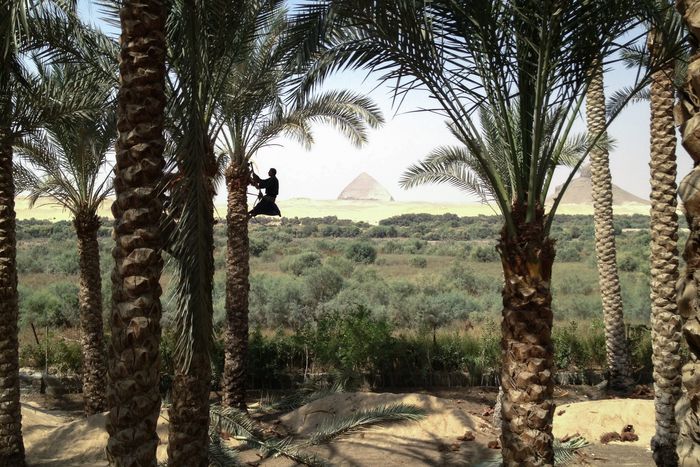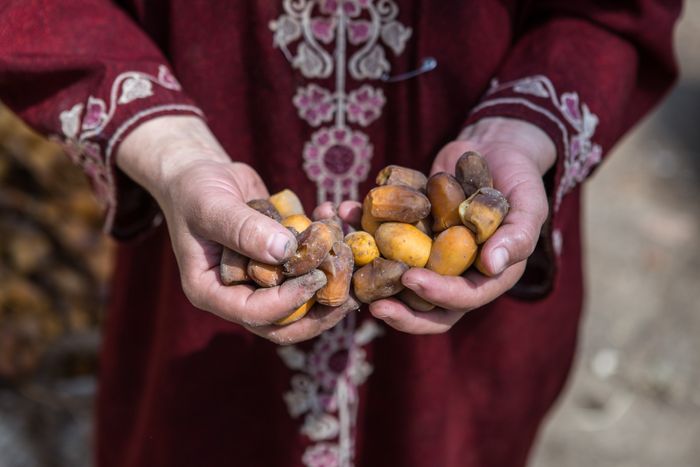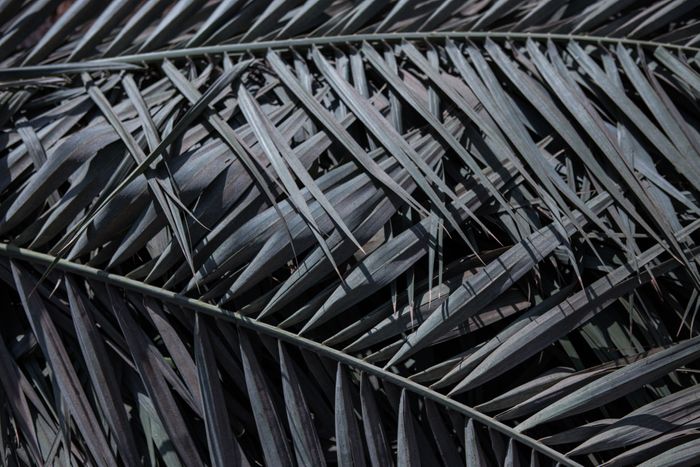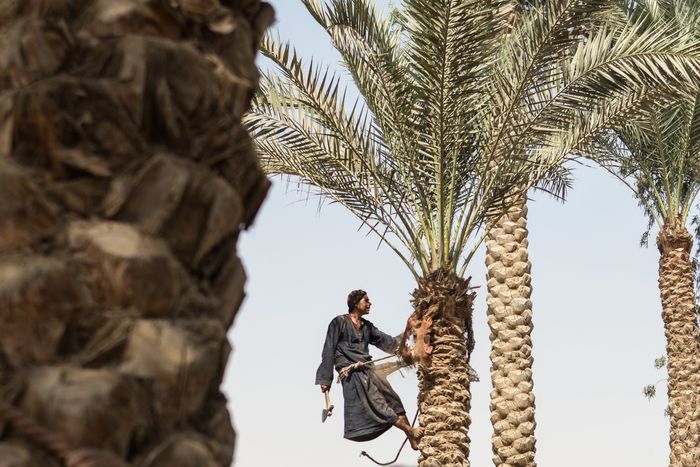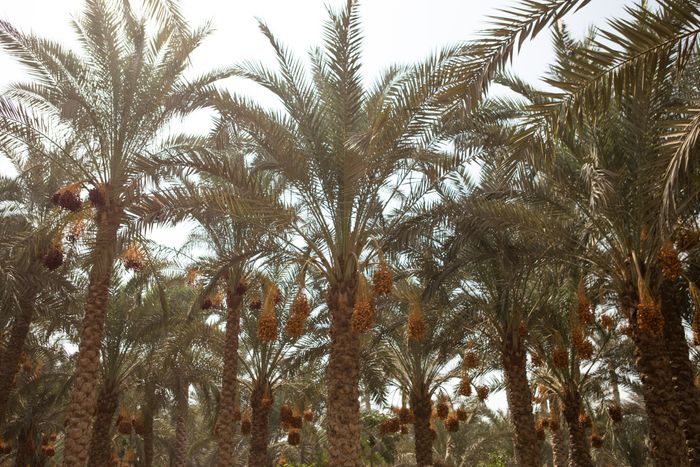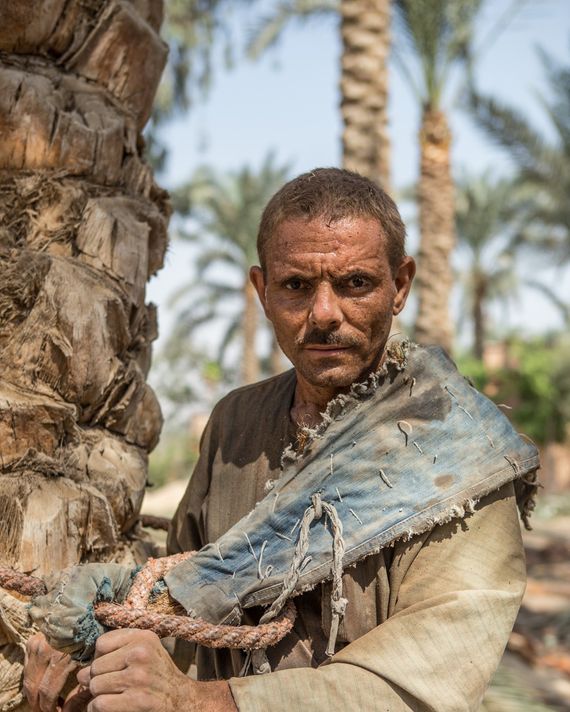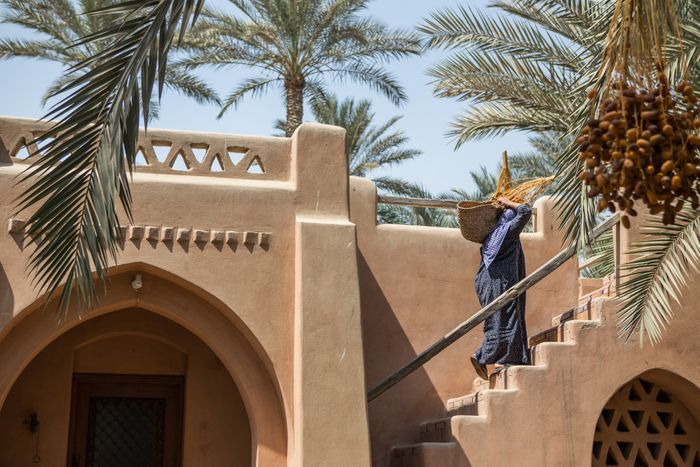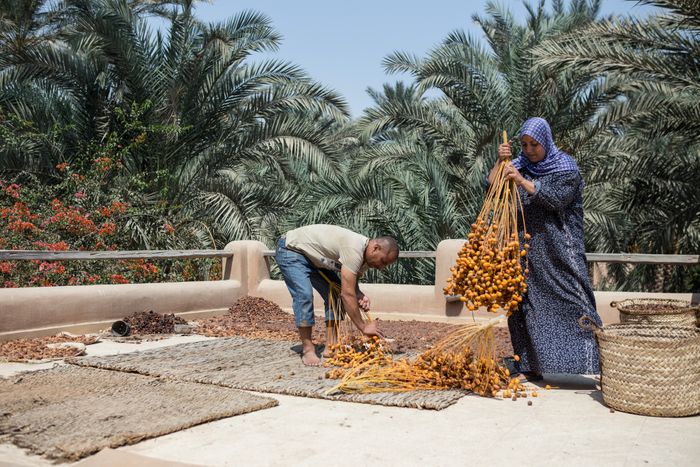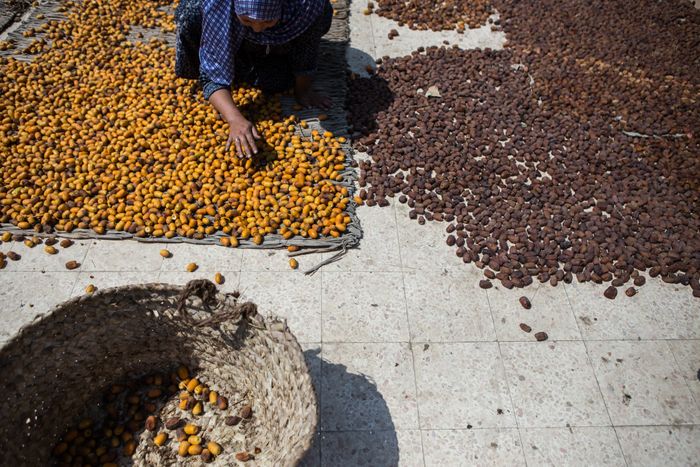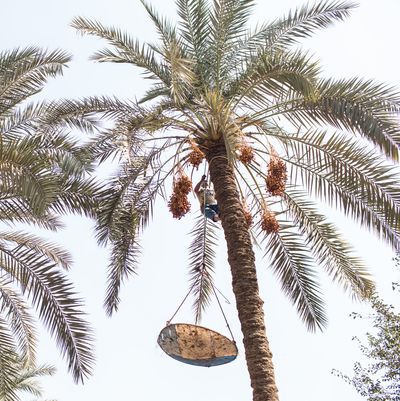
Weekend With is an ongoing Instagram series that features people we like photographing places we’d like to be. Follow @thecut on Instagram to join in, and tag your photos with #weekendwith when you travel somewhere new.
Egypt is one of the largest exporters of dates in the world. Photographer Christina Rizk, who was born and raised there, recently spent a day documenting the process of harvesting the palm trees. “To the inexperienced eye, all palm trees look the same, but the wood patterns, frond leaf shapes, date colours, and even textures of the palm fibers are incredibly diverse,” she says. Scroll down for her photos of the harvest.
The silhouette of a man trimming and cleaning a palm tree in Dahshur. In the far distance, you can see the Bent Pyramid, an ancient Egyptian pyramid located at the royal necropolis of Dahshur, approximately 40 kilometres south of Cairo, Egypt’s capital. To the right is the Red Pyramid, the world’s first true smooth-sided pyramid.
Ashraf at the top of a palm tree shaking and cutting down palm fronds to harvest. Ashraf is not a date-palm specialist, but harvests the palm trees and tends to all the farming needs on the plot of land where he and his family live.
A handmade basket filled with dates from the harvest. Date harvest season lasts one month, but each palm tree can be harvested several times throughout the month. Before Ashraf climbs the tree to cut down palm fronds, he shakes them, allowing ripe dates to fall off the frond.
Ibtisam collects dates that have fallen to the ground and places them in a large hand-woven basked for drying.
Palm tree cuttings lay on the ground after having been trimmed from the trees.
A palm harvesting specialist trimming and cleaning a palm tree.
There are thousands of palm trees in Dahshur, just a 30-minute drive from downtown Cairo.
Medhat is a palm harvesting specialist who works on commission in the area to trim and harvest date palms all year round.
Ibtisam carrying a basket of freshly cut palm fronds and dates to lay out in the sun.
The couple remove dates from their stems, preparing them to dry. This variety of dates, the Siwi variety, is never sold fresh for consumption. It is sun-dried only, and made into a paste. Other date varieties have to be consumed fresh and can’t be dried. They are often made into jams or sweets, their pits used for coffee.
Ibtisam arranges the dates to begin sun-drying. On the right are previously harvested dates that have now turned from yellow to deep brown.


